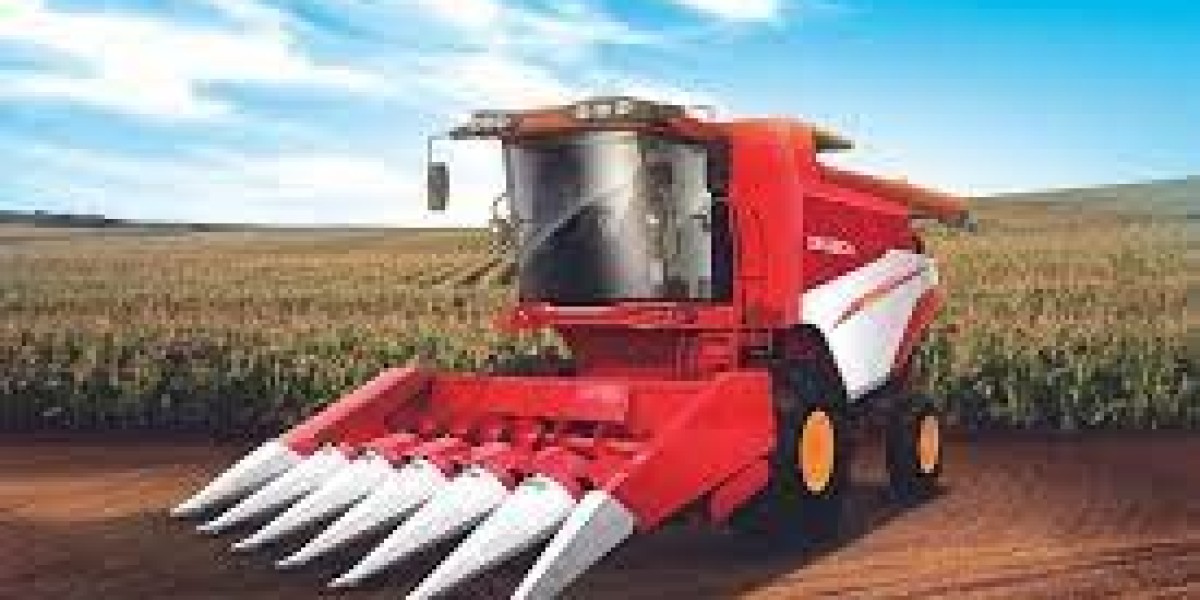In the world of modern agriculture, the combine harvester stands as a crucial machine that revolutionized the way crops are harvested. With its advanced technology and impressive capabilities, the combine harvester has become an indispensable tool for farmers around the globe. This article delves into the intricacies of combine harvester, exploring their features, benefits, and how they contribute to maximizing efficiency and productivity on the field.
Understanding the Combine Harvester
The combine harvester, often referred to as a "combine," is a versatile farming machine that integrates multiple processes involved in harvesting crops. Its primary purpose is to efficiently harvest and separate grains from the crops, eliminating the need for manual labor-intensive methods. The combine harvester combines three key functions: reaping, threshing, and winnowing, streamlining the harvesting process significantly.
Features and Components
A) Reaping Mechanism:
The combine harvester machine is equipped with a cutting mechanism that effectively cuts the crop close to the ground. This mechanism, often a rotating reel or a reciprocating knife, ensures that the maximum yield is obtained from the crop.
B) Threshing Mechanism:
Once the crop is harvested, the combine harvester utilizes its threshing mechanism to separate the grains from the rest of the plant material. This process involves the use of a rotating drum or a series of concave bars that separate the grains from the straw and chaff.
C) Separation Mechanism:
Following the threshing process, the combine harvester employs a separation mechanism to separate the grain from the straw and chaff. This can be achieved using a combination of sieves and fans that remove unwanted materials, leaving behind the clean grain.
D) Grain Collection:
The combine harvester collects the separated grain into a grain tank, allowing for continuous harvesting without the need for frequent unloading. This feature enhances efficiency and minimizes downtime during the harvesting process.
Benefits of Using Combine Harvesters
A) Increased Efficiency:
The integration of multiple processes into a single machine makes combine harvesters incredibly efficient. Farmers can cover more ground and harvest crops at a faster pace, optimizing their productivity during harvest season.
B) Labor Savings:
The use of combine harvesters reduces the dependency on manual labor, saving valuable time and resources. This allows farmers to allocate their workforce to other critical farming activities.
C) Enhanced Crop Quality:
Combine harvesters ensure a higher-quality harvesting equipment by minimizing crop damage during the harvesting process. With precise cutting mechanisms and gentle handling of grains, the machine helps maintain the integrity and market value of the harvested crops.
D) Time Management:
By completing multiple tasks simultaneously, combine harvesters enable farmers to manage their time effectively. They can harvest crops swiftly, reducing the risk of spoilage and ensuring timely delivery to the market.
Maximizing Efficiency and Productivity
A) Regular Maintenance:
To ensure optimal performance, regular maintenance of combine harvesters is crucial. Farmers should follow manufacturer guidelines for maintenance and conduct routine inspections, including cleaning, lubrication, and timely replacement of worn-out parts.
B) Operator Training:
Proper training for combine harvester operators is essential to maximize efficiency and productivity. Operators should be well-versed in the machine's controls, settings, and troubleshooting techniques to minimize downtime and ensure smooth operations.
C) Field Conditions:
Selecting the right field conditions is vital for maximizing the effectiveness of combine harvesters. Farmers should consider factors such as soil moisture, crop maturity, and weather conditions to determine the ideal time for harvesting.
D) Technology Integration:
Leveraging the latest technological advancements can significantly enhance the efficiency and productivity of combine harvesters. Features like GPS guidance, yield monitoring systems, and automated controls enable precise operation and data-driven decision-making.
Conclusion:
The combine harvester is an indispensable tool for modern agriculture, revolutionizing the way crops are harvested. Its efficient integration of multiple functions results in increased productivity, labor savings, and improved crop quality. By following proper maintenance procedures, providing adequate training, considering field conditions, and embracing technological advancements, farmers can maximize the efficiency and productivity of their combine harvesters. Embrace this advanced agricultural machinery and witness its transformative power in your farming operations.
 " class="wow_main_float_head_img">
" class="wow_main_float_head_img">






